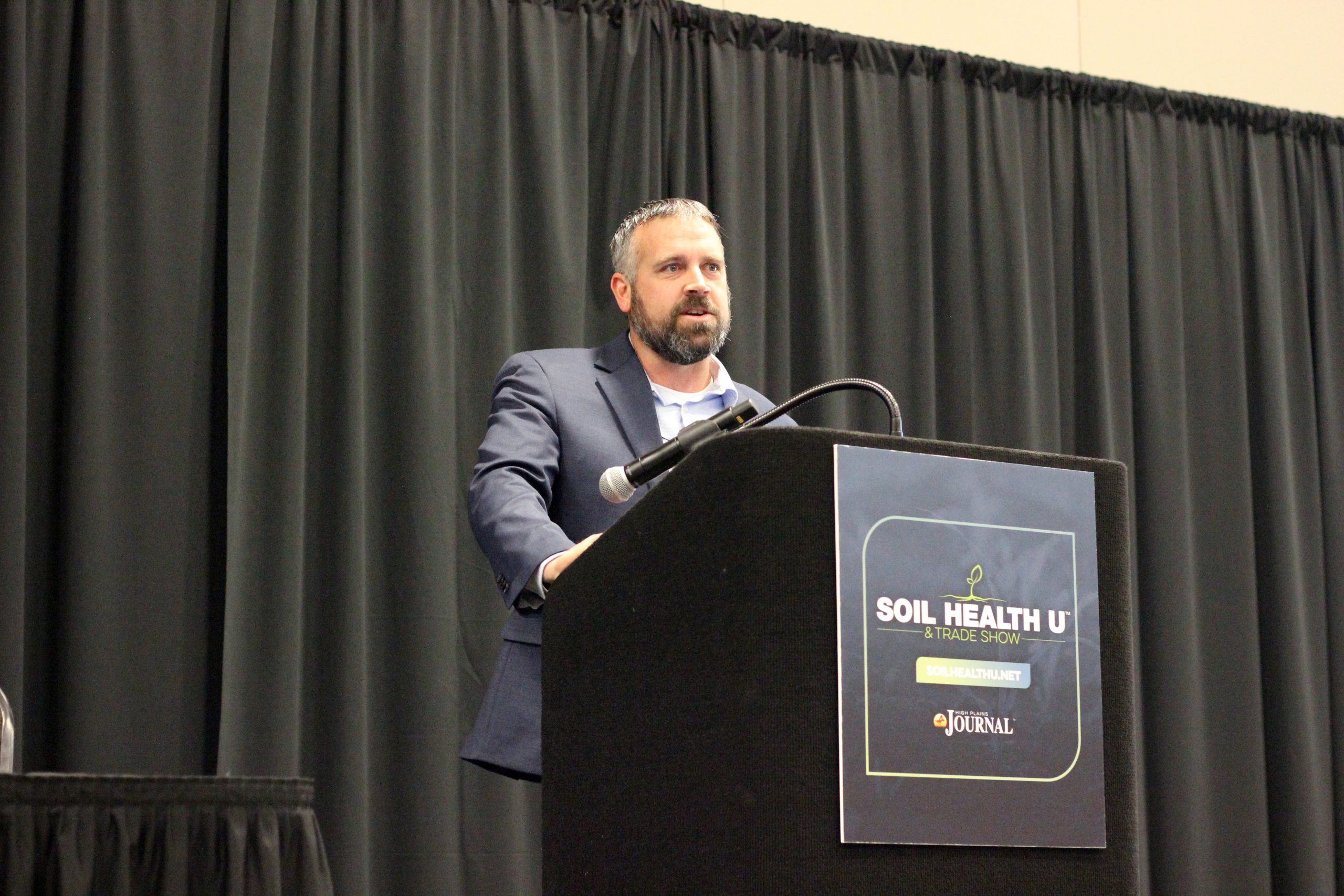Noble Research Institute consultant talks grazing for soil health

Grazing to improve soil health was on the agenda when Joshua Gaskamp, consultation manager at Noble Research Institute, took the stage recently at Soil Health U 2024 in Salina, Kansas.
Gaskamp explained NRI’s focus, which is land stewardship for improved soil health in grazing animal production with lasting producer profitability. The institute provides valuable education for farmers and ranchers who want to regenerate their soil and profits with the use of livestock.
Gaskamp spoke about grazing for soil health at the recent Soil Health U event in Salina, Kansas, and is shown in a Journal photo by Lacey Vilhauer.
Principles of soil health
Gaskamp started off by reminding the attendees of the six principles of soil health: know your context, cover the soil, minimize soil disturbance, maintain continuous living plants, increase diversity, and integrate livestock.
“Adding diversity is the biggest bang for my buck on my ranch,” Gaskamp explained. “I want as many plant and animal species out there as possible because what that inevitably does is create an opportunity for wildlife and micro and macro biology in the soil.”
One of the most difficult aspects for farmers and ranchers to accept is changing their mindsets around grazing and not just following the path previous generations have taken, Gaskamp said.
“It’s not how granddad or dad made it out to be where you had to be out there every day in the morning and every day in the evening checking on the cows,” he said. “It’s about making ranching fun again and spending some time with your livestock but adapting your grazing management.”
Three rules of grazing
Gaskamp said there are three grazing rules that landowners should follow. Rule No. 1 is to manage stocking rate to never exceed carrying capacity.
According to Gaskamp, stocking rate is often the most likely culprit for overgrazing. However, he said producers can make positive changes if they adjust their stocking rate, and improvements are often seen immediately.
“We work with producers to understand carrying capacity and what your stocking rate should be on your ranch, but yet we still over graze land,” Gaskamp explained. “Carrying capacity is really the answer to understanding how many animals you can run. For every month of “hustling” or hay feeding over the planned amount, you’re overstocked by 8.3%.”
Rule No. 2 is to plan and graze adaptively. Gaskamp said managing time is essential to regenerative and profitable grazing. He said it is crucial for producers to understand they can be understocked and overgrazing at the same time if they are not managing the time livestock spend on pastures.
He recommends limiting the graze period and extending the recovery period to optimize the use of land along with stock density.
“Loss of vegetation occurs through overgrazing and overgrazing occurs one plant at a time and is the result of staying too long on a pasture and allowing animals to continue to graze their preferential species over and over until it’s gone,” he said. “It can also be a result of returning too soon to the pasture before it has adequate time to recover and get back to an opportunity where it is storing more energy that it’s using.”
Work with nature
Rule No. 3 is to work with nature, not against it. With this rule, Gaskamp said adaptability is the most important strategy. He advised producers to use the power of observation to understand the changes they need to make in their operation.
“Ranch sustainability is continual improvement,” he said. “It’s direction over perfection in land, livestock and profitability and in our world.”
Lacey Vilhauer can be reached at 620-227-1871 or [email protected].



